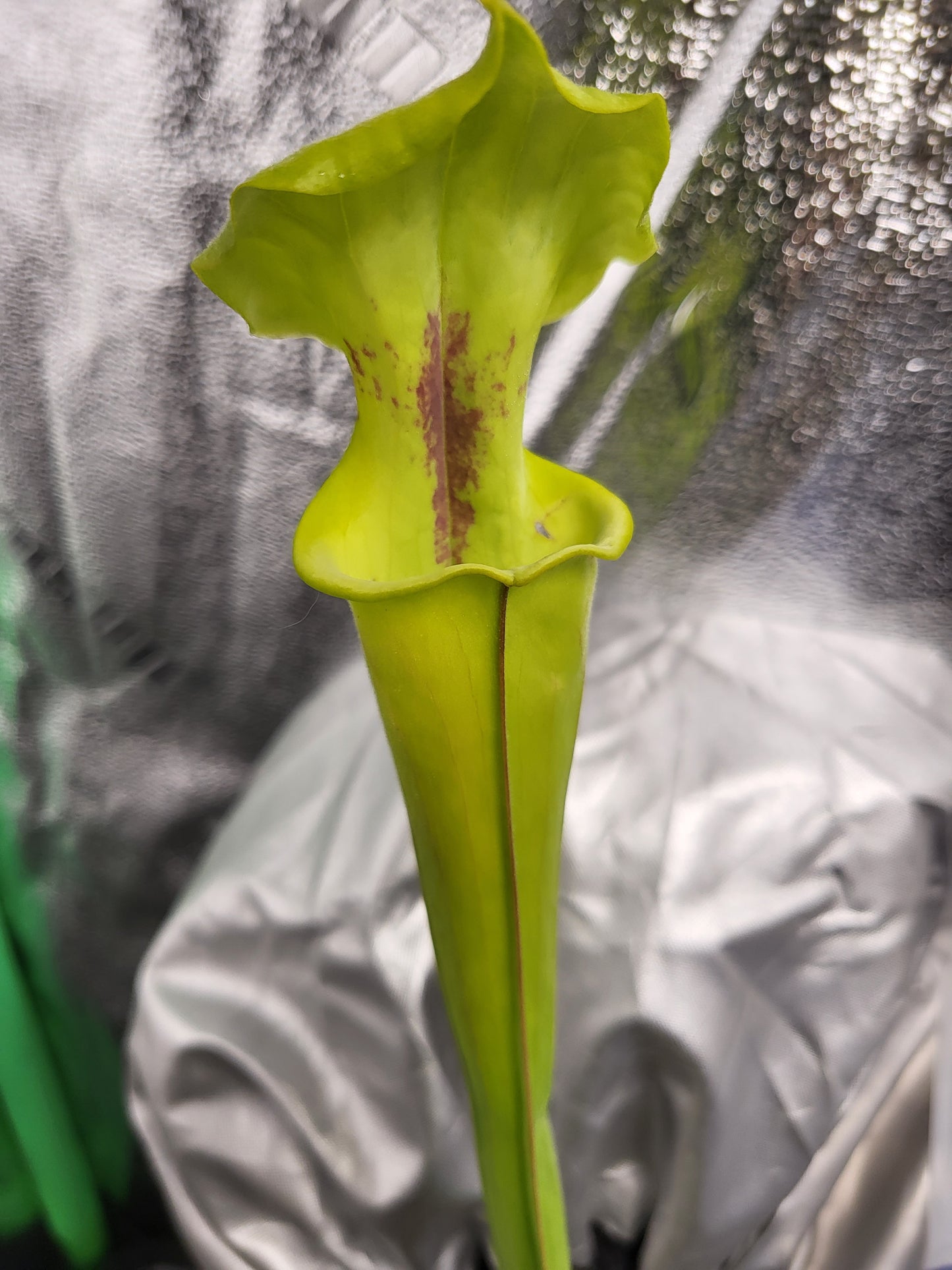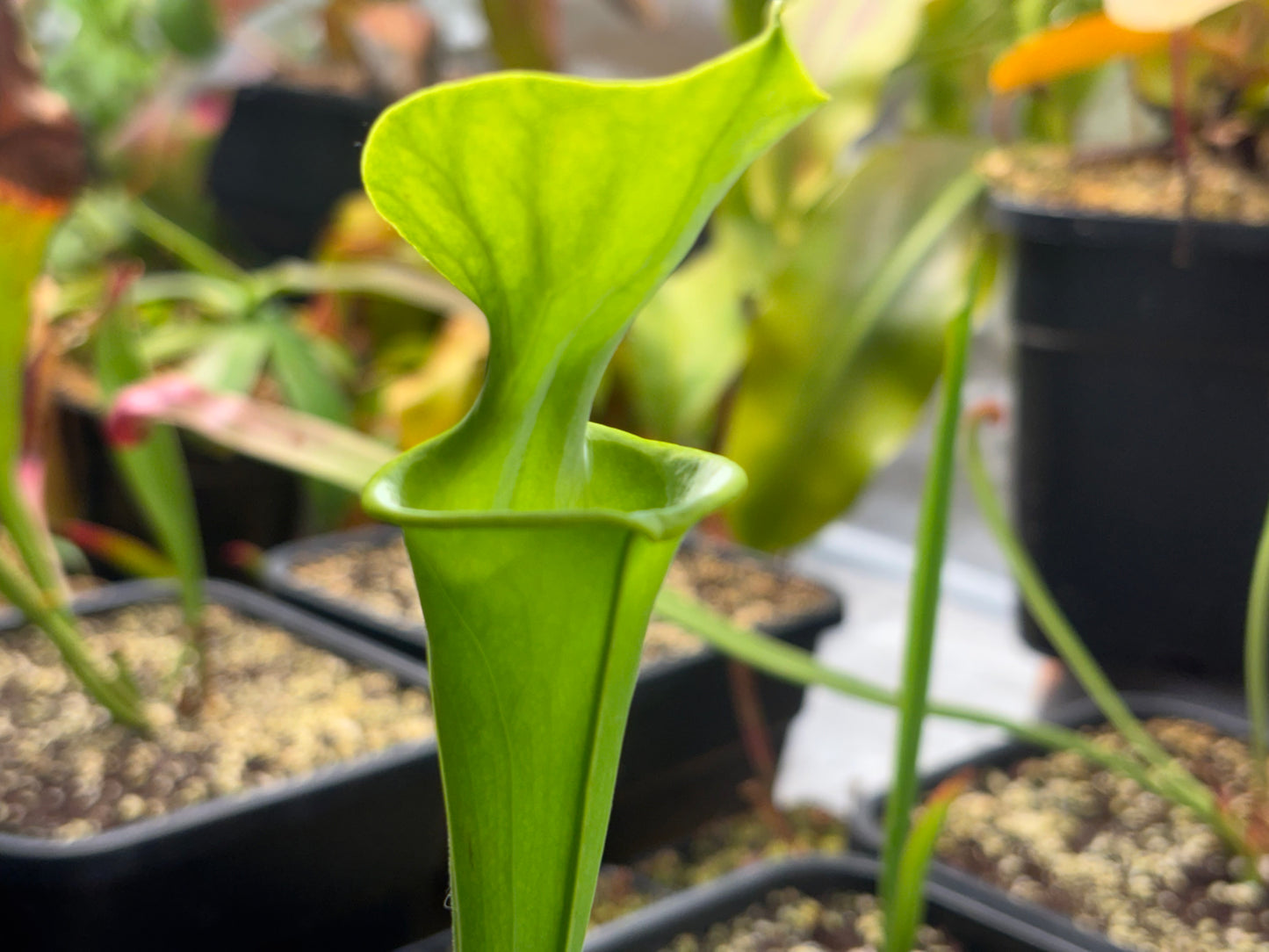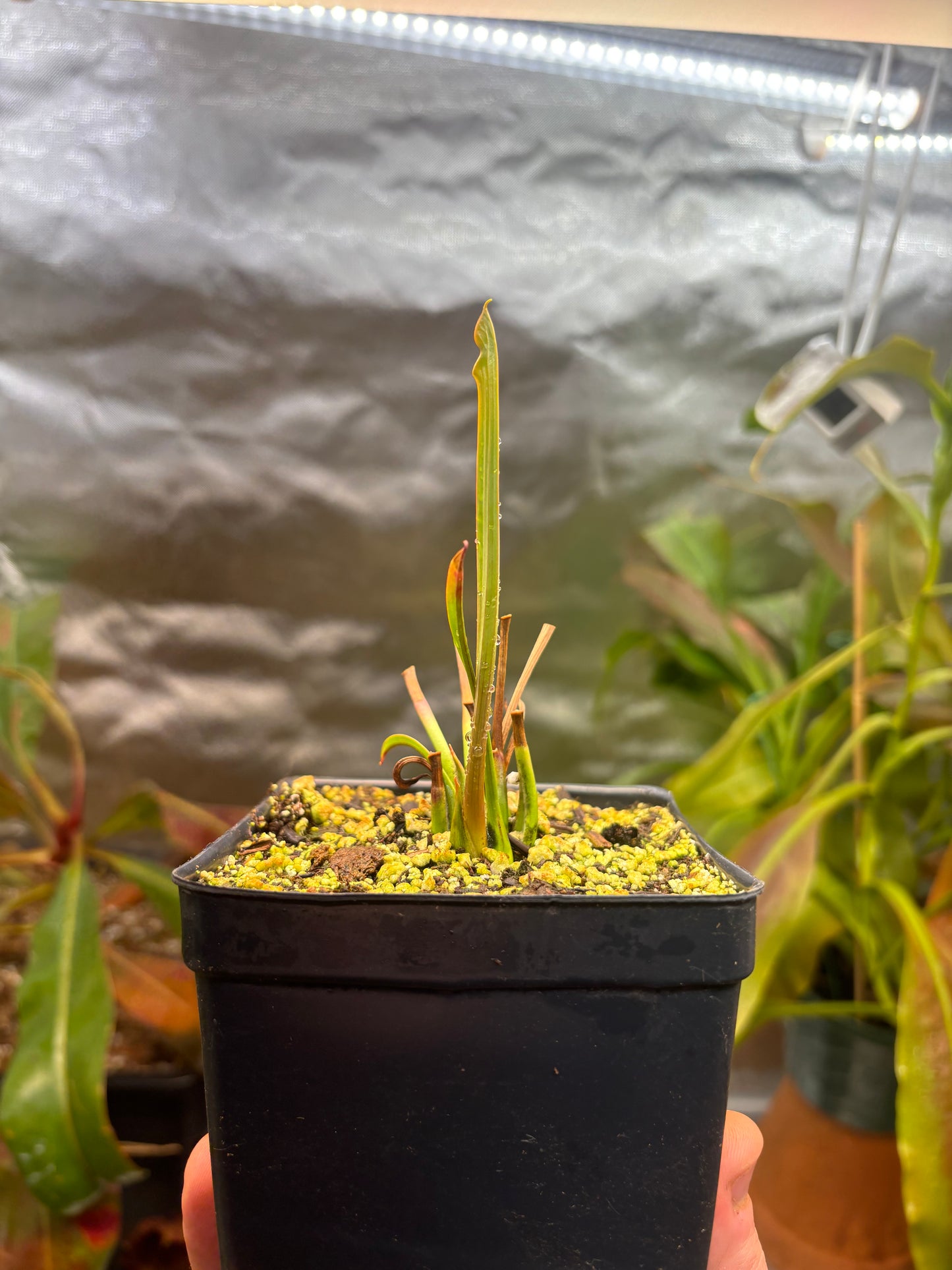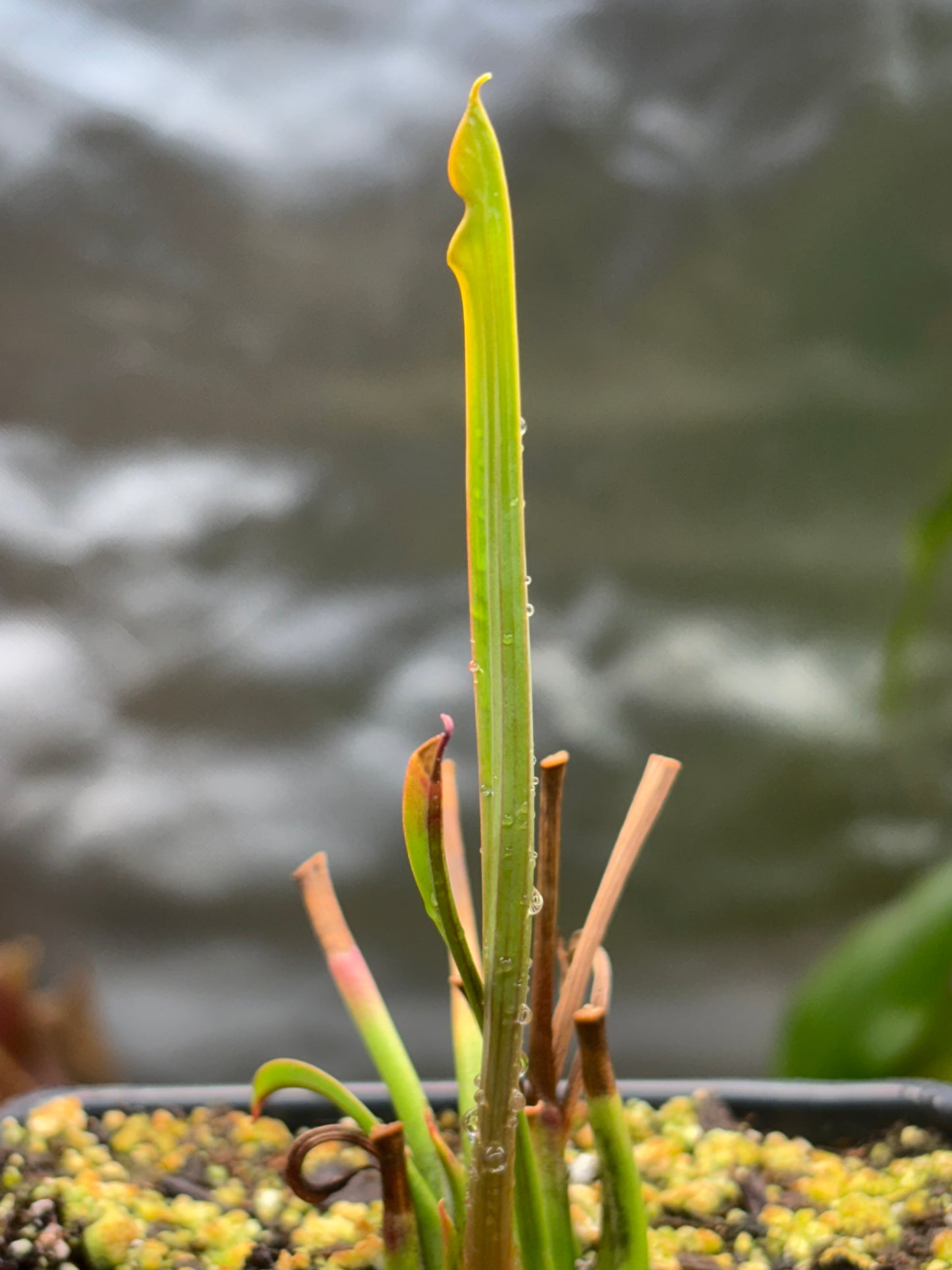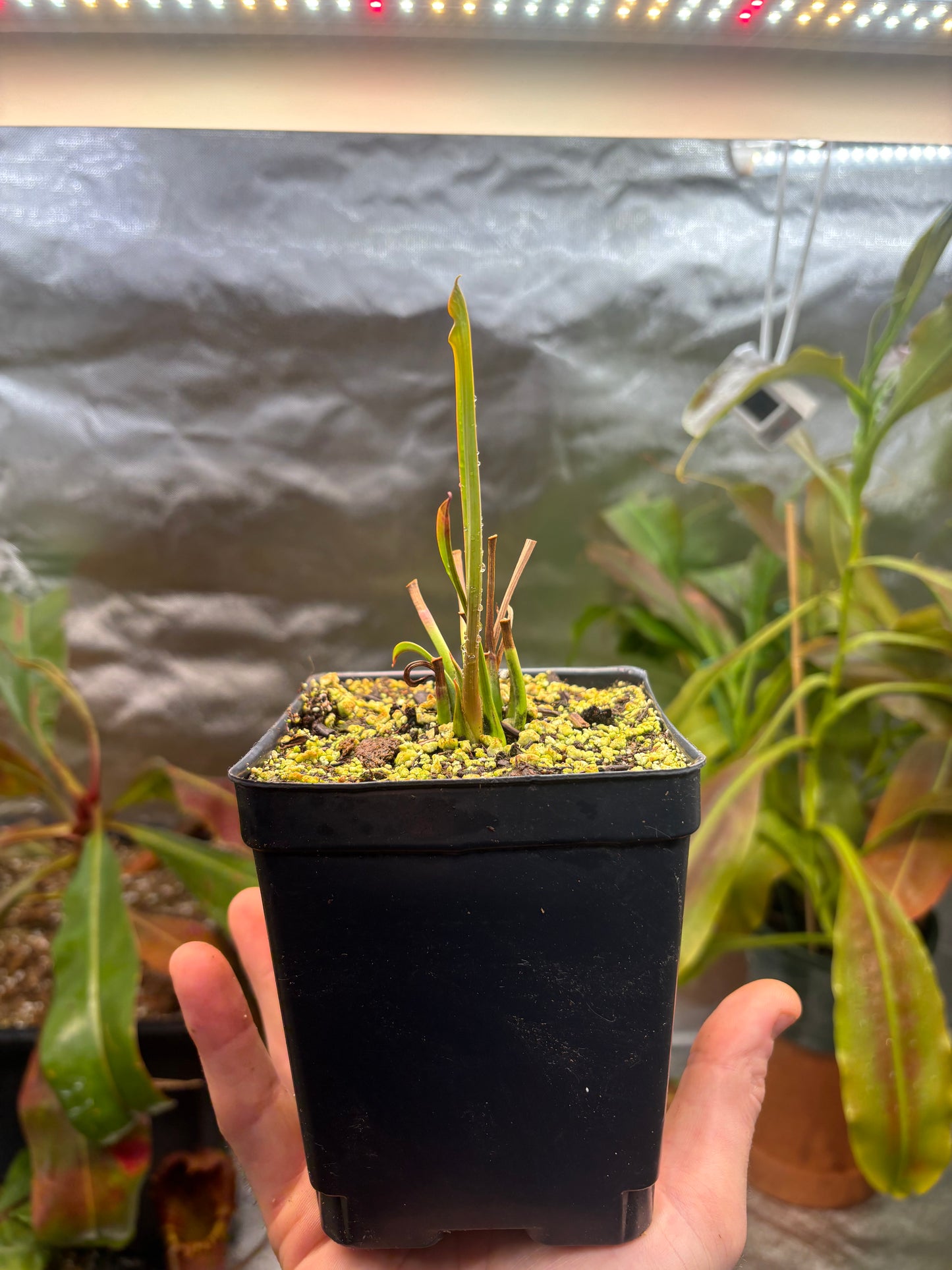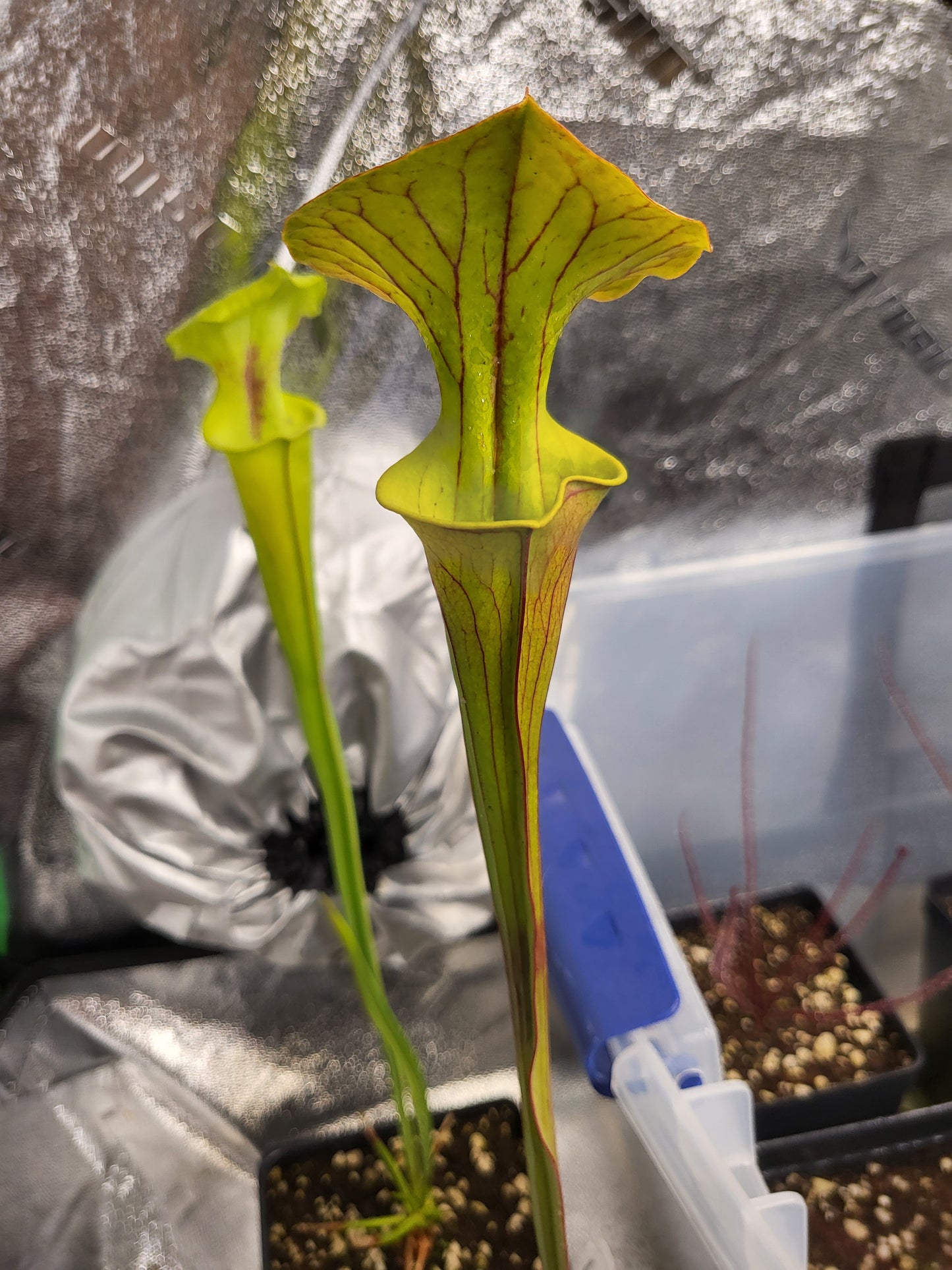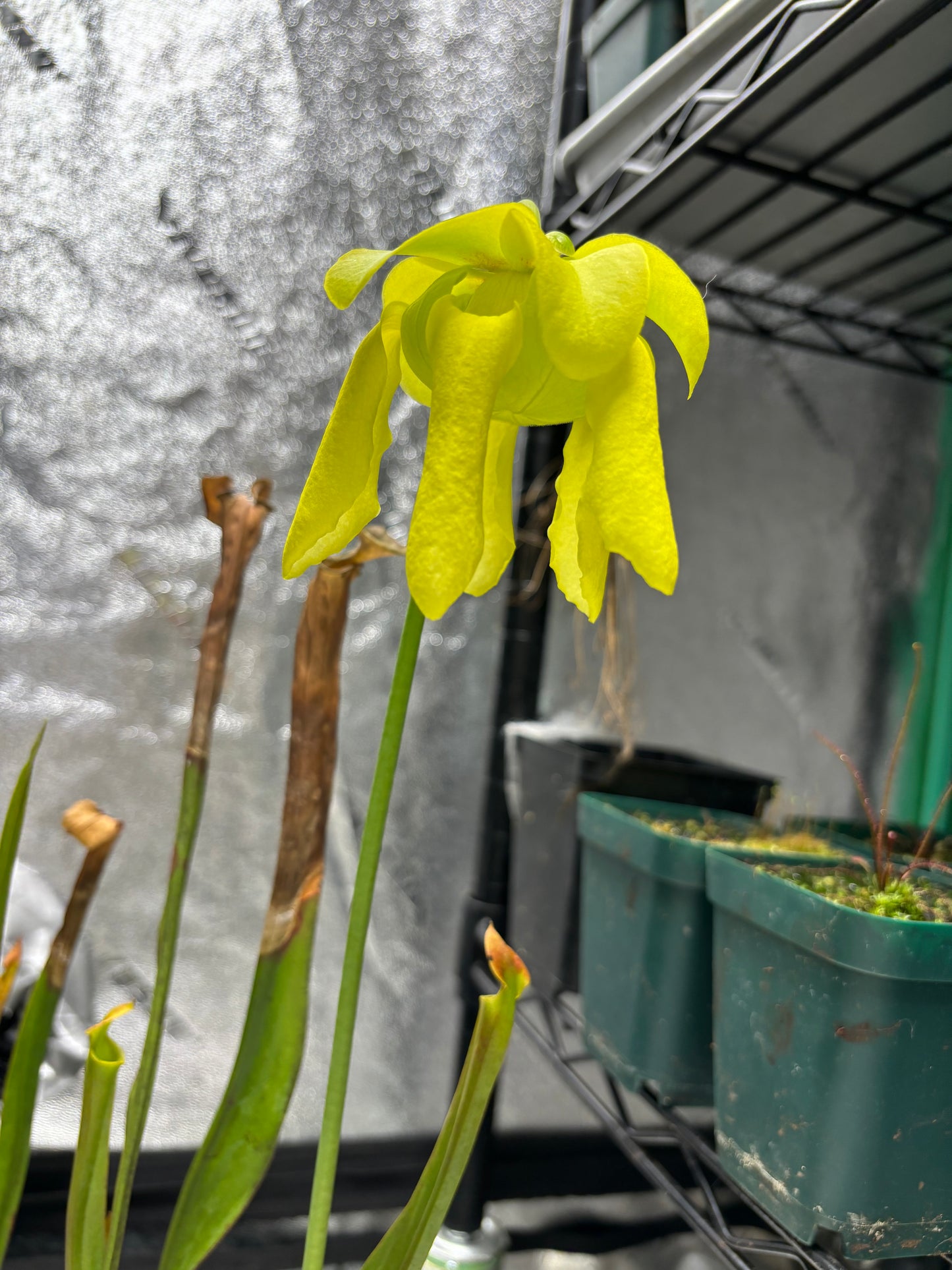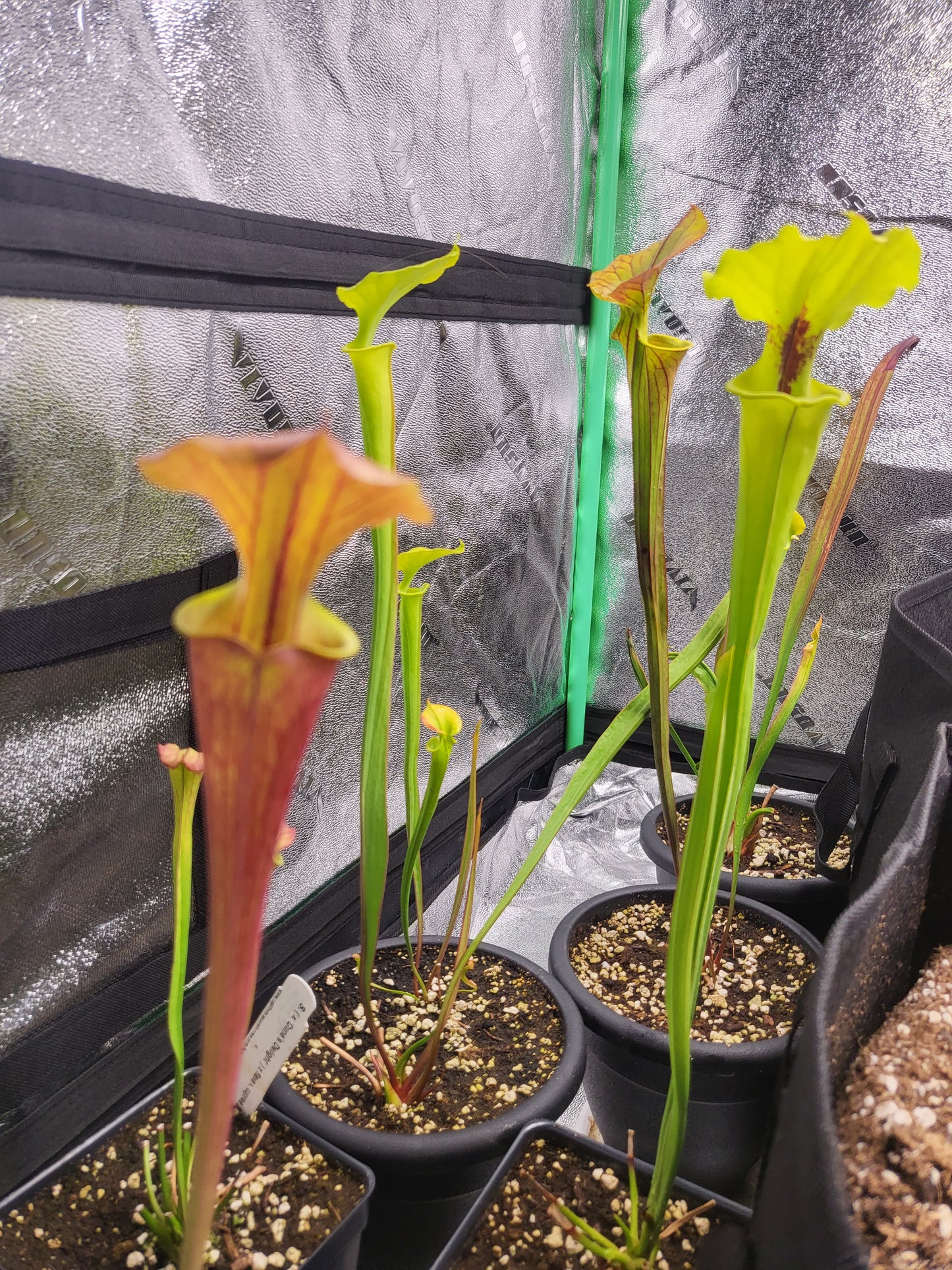Sarracenia flava
Sarracenia flava
Couldn't load pickup availability
SCIENTIFIC NAME: Sarracenia flava
COMMON NAME: North American Pitcher Plant.
PLACE OF ORIGIN: Canada through eastern North America to Florida.
GENERAL INFO: Sarracenia were the first species of pitcher plants discovered in the new world! These plants are some of the largest carnivorous plants and also some of the easiest to grow. Most species experience a winter dormancy and replace their carnivorous pitcher leaves with non carnivorous flat leaves to photosynthesis through winter. These plants are also some of the most effective predators, often falling over from the weight of a full pitcher of bugs!
WATER: Sarracenia occur in wet savannahs or open boggy areas. They should be kept permantly wet through the active growing season( spring to fall) and allowed to dry out and even freeze (or refrigerate) during their dormant phase in fall through winter. Use low TDs water, per all CPs, and water each day or keep on the tray system ( leaving the pot in a shallow saucer of water covering 1/4th of the pot).
SOIL: We use a 60/40 or 50/50 perlite to peat mix for all sarracenia.
CONTAINERS: Medium plants up to a foot tall can be left growing in 4-6 inch pots for up to a year. Consider repotting ever 1-2 years after depending on growth, eventually anticipating 10 to 12 inch pots as these plants spread and divide via their roots.
LIGHT: Sarracenia should be allowed 8-16 hours of full spectrum sunlight or artificial LED’s during their active growing season. Greenhouses make the best environments depending on your conditions. (plants should receive reduced photo periods and cold to freezing temps during winter dormancy)
FERTILIZATION: We recommend using MAXSEA brand fertilizer for all carnivorous plants, as these
sensitive plants respond very well to this formulation. (Available on our website). The plants will naturally catch pests, and these can be
‘fed’ to the plant by simply dropping them into the pitcher. Fertilize once every 2 weeks in spring
and summer, and once a month in winter. Never let fertilizer touch flowers!
